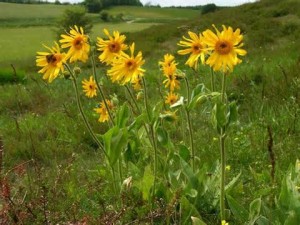Arnica is a well known and recognized homeopathic supplement in plastic surgery. It is touted as an anti-bruise and anti-inflammatory treatment measure that is widely prescribed after many procedures from injectable fillers to facelifts. While it is widely used, the interesting question is whether it is really effective and what is the evidence that it works.

Historically there are few studies that have shown that Arnica was more effective than a placebo for any of its touted benefits. More recent animal studies have shown increased levels of anti-inflammatory cytokine interleukin (IL-10) and decreased levels of pro-inflammatory protein tumor necrosis factor. (TNF) Both effects can have clinical effects of reduced swelling and inflammation. A clinical study of carpal tunnel surgery showed less pain at two weeks when oral and topical Arnica was used. In a clinical study of big toe surgery, Arnica was found to be equally effective at reducing wound irritation (less effective at pain reduction) but less costly and better tolerated than Diclofenac. A clinical study to evaluate bruising in facelift surgery did show a significant lessening of the amount of bruising with Arnica Montana.
The clinical evidence that Arnica has a significant anti-inflammatory effect is not strong. There is only one clinical study that shows it has an anti-bruising. (despite the fact that it continues to be highly touted as such) There are a surprisingly limited number of studies in the plastic surgery literature that have been done let alone show it has beneficial recovery effects. But Arnica continues to be used in plastic surgery largely because there is no harm in doing so and it is very inexpensive. There is likely something to the homeopathic effect of a ‘natural remedy’ that also propagates its continued use.

Because of the wide variability in how Arnica is prepared and the difficulty in studying the clinical effects of swelling, pain and bruising, demonstrating that Arnica actually has any positive benefits on surgical recovery is difficult. Its continued use will be based on limited clinical information of its effectiveness and more on whatever placebo effects it may provide.
Dr. Barry Eppley
Indianapolis, Indiana


